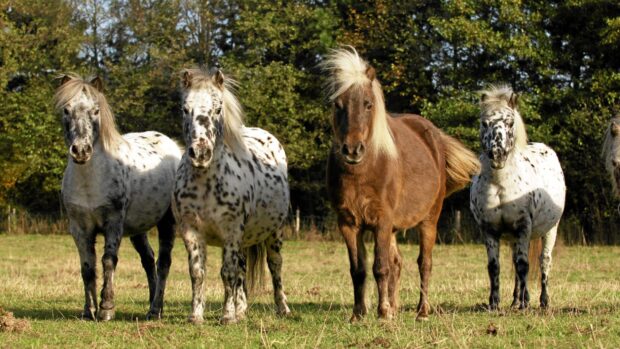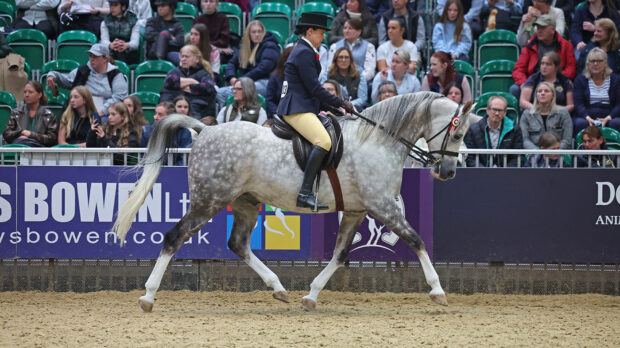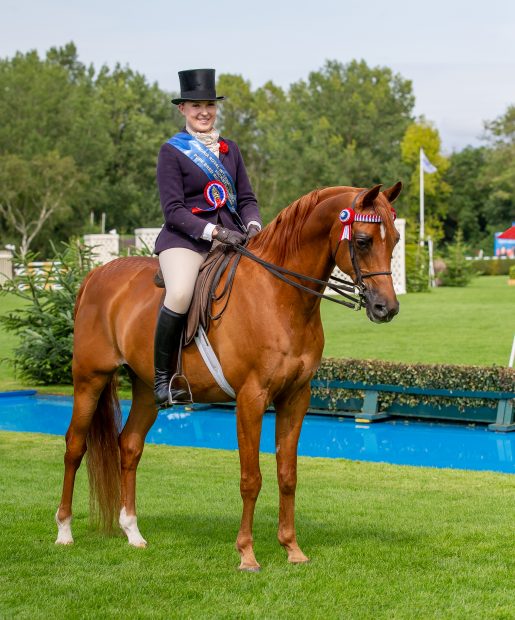With its elegant dished face, tail held high and floating paces, the Arabian horse is one of the world’s most recognisable horse breeds. It is arguably one of the oldest breeds still in existence, with archaeological evidence of Middle Eastern horses resembling modern Arabians dating back 4,500 years. Famous warriors such as Ghengis Khan, Alexander the Great, and the prophet Mohammed are believed to have favoured Arabians. And today, Arabian bloodlines have contributed to nearly every modern light horse breed, from the thoroughbred in England to Russia’s Orloff Trotter and even the Percheron draft horse in France.
The Arabian bloodlines began on the Arabian Peninsula, where the nomadic Bedouin tribe developed the breed that could cope with travelling long distances with ease, had a natural willingness to cooperate with humans, but also had the spirit and courage required for war and raids. Nowadays, this translates especially well to endurance riding, but Arabians and part-breds are found in many other disciplines across the equestrian world.
In this article: Looks and conformation | Six types of Arabian | Temperament
Looks and conformation
There are five key elements for correct Arabian conformation:
- Head: comparatively small, preferably with a slight dish below the eyes, small muzzle with large nostrils; large dark eyes, well set-apart; small and shapely ears with tips curved slightly inwards
- Neck: long and arched (with a large well-set windpipe); set on high
- Back: short and straight
- Croup: fairly horizontal
- Tail: natural high carriage
Although they are a relatively small horse, typically standing 14.1hh–15.1hh, they may have a greater bone density than other breeds, with short cannons and strong hoof walls, which give them greater physical strength than you might expect from their dainty, elegant appearance.
Their broad, short backs mean Arabians typically have fewer lumbar vertebrae than other breeds (five as oppose to six) and 17 ribs compared to the usual 18.
The Arab Horse Association registers pure-bred horses with the coat colours bay, grey, chestnut, black and roan, with the first three being the most common. The roan is usually rabicano (partial roan) or sabino (irregular white spotting) patterns, as the roan gene does not appear to exist in Arabians. Arabians have black skin, even with white coats (except under white markings), which would have given them more protection from the desert sun.
There are no pure-bred skewbald or piebald Arabians. Also, pure-breds do not carry dilution genes, which means they cannot be dun, cremello, palomino, perlino or buckskin.
Six types of Arabian horse
As Arabian horses have spread throughout the world, via war and trading, they have adapted to their environments. This has given rise to six distinct types of the modern Arabian.
Egyptian Arabian: this is quite a rare type, making up only about 2% of the Arabian horse population. They stem from the Egyptian elite’s desire to own desert horses, and in the 20th century Egyptian breeders started preserving this type. They are considered the purest of the types as their bloodlines can be traced back to an Egyptian herd owned by Viceroy Mohammed Ali. Breeders seek them out for their purity and elegance.
Russian Arabian: this type was developed in the 17th century by Russian czars and aristocracy and stems from different Arabian bloodlines, including Crabbet and Polish. They are typically around 15hh and a dark brown colour.
Polish Arabian: the Poles captured many Arabians from Turkish invaders in the 16th century and began breeding a specific type and improving their own horse breeds. Sadly, most of their stock was lost in World War I, leading to a breeding society being established in 1926. The Polish type has two strains, the Seglawi and the Kuhailan – the former being prized for its refined beauty, the latter for its athleticism.
Crabbet Arabian: these originated in the late 19th century in Crabbet, Sussex. Wildred Scawen and Lady Anne Blunt imported desert Arabians from Syria, Iraq and Saudi Arabia, seeking out the best examples from which to breed. Their stud, Crabbet Park Stud, became the principal centre of Arabian horse breeding in England. They are typically a larger, sturdier horse than, say, the Egyptian type.
Spanish Arabian: the least common of all Arabian types, accounting for less than 1% of the Arab horse population. They started being bred in the early 20th century by the military, which was in charge of all breeding. They were imported from the Middle East, Poland and France to improve the local Spanish horse population, and today all Spanish Arabians descend from Spanish Studbook pedigrees.
Shagya Arabian: the Hungarian military developed this type of Arabian in the 18th century, aiming to produce a cavalry horse with all the Arabian advantages, but larger and stronger, and with greater jumping ability. They are therefore the least pure and typically the tallest of all the Arabian breeds, containing a mix of bloodlines from desert-bred Arabian stallions with European mares that were largely descended from Arabian stock, but might contain some thoroughbred or Lipizzaner blood. Their name comes from the tall, strong and eponymous stallion Shagya, whose bloodlines appear in most Shagya Arabians.
The Arabian temperament
Although they are a hot-blooded breed, like the thoroughbred which owes much of its pedigree to Arabian ancestry, they have been bred over centuries to have an easy-going nature. The Bedouins used to keep their horses in their tents with them, so they prized horses with kind temperaments for breeding. However, their hot-blooded side means they are quick and intelligent – like most horses, they can become nervous and reactive if badly treated although they would naturally strive to please humans.
As the saying goes in the Middle East: “An Arabian will take care of its owner as no other horse will, for it has not only been raised to physical perfection, but has been instilled with a spirit of loyalty unparalleled by that of any other breed.”
Arabians are well known for their tremendous stamina – they are the ultimate endurance horse, thanks to their soundness, toughness and lightness across the ground. But they aren’t just long-distance machines; they can reach up to 40mph, which makes them third only to the Quarter horse and thoroughbred in a sprint.
Despite their illustrious and ancient ancestry, today’s prices of Arabian horse are comparable with other popular breeds. As with any horse, there is no ballpark figure on how much one costs. Prices are dependent on age, training, temperament, conformation, ability and so on. But you’re buying a slice of history – the pure-bred Arabian you ride today would be almost identical to the war horses ridden by the warriors of old.
You may also be interested to read…

The Shire horse: all you need to know about this majestic breed
Discover the history behind and facts about this large breed of horse

The Irish Sport Horse — all the facts about this popular breed
Find out everything you need to know about this breed of horse

The athletic thoroughbred: everything you need to know
Find out everything you need to know about this popular breed of horse

Subscribe to Horse & Hound magazine today – and enjoy unlimited website access all year round
Horse & Hound magazine, out every Thursday, is packed with all the latest news and reports, as well as interviews, specials, nostalgia, vet and training advice. Find how you can enjoy the magazine delivered to your door every week, plus options to upgrade your subscription to access our online service that brings you breaking news and reports as well as other benefits.





